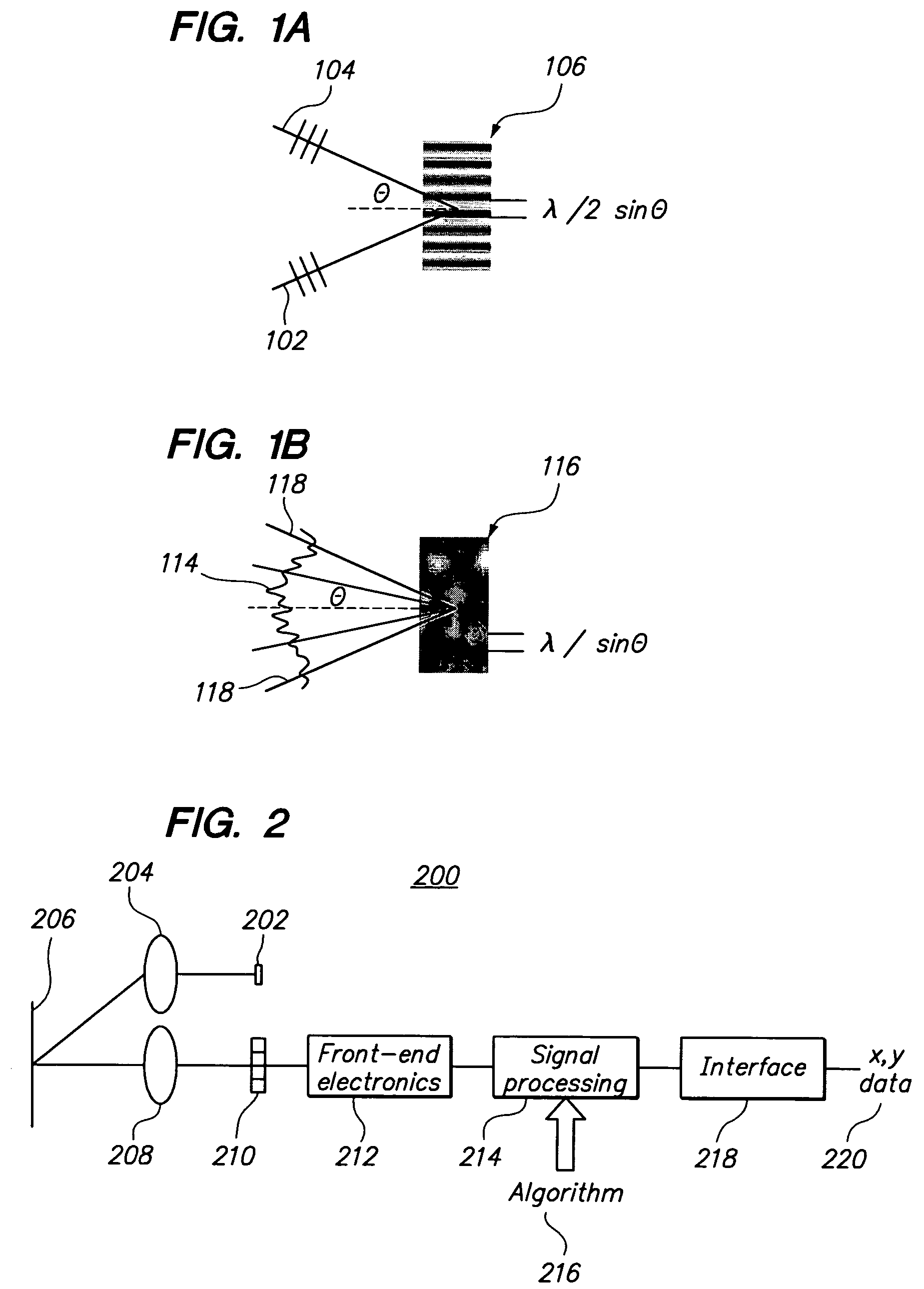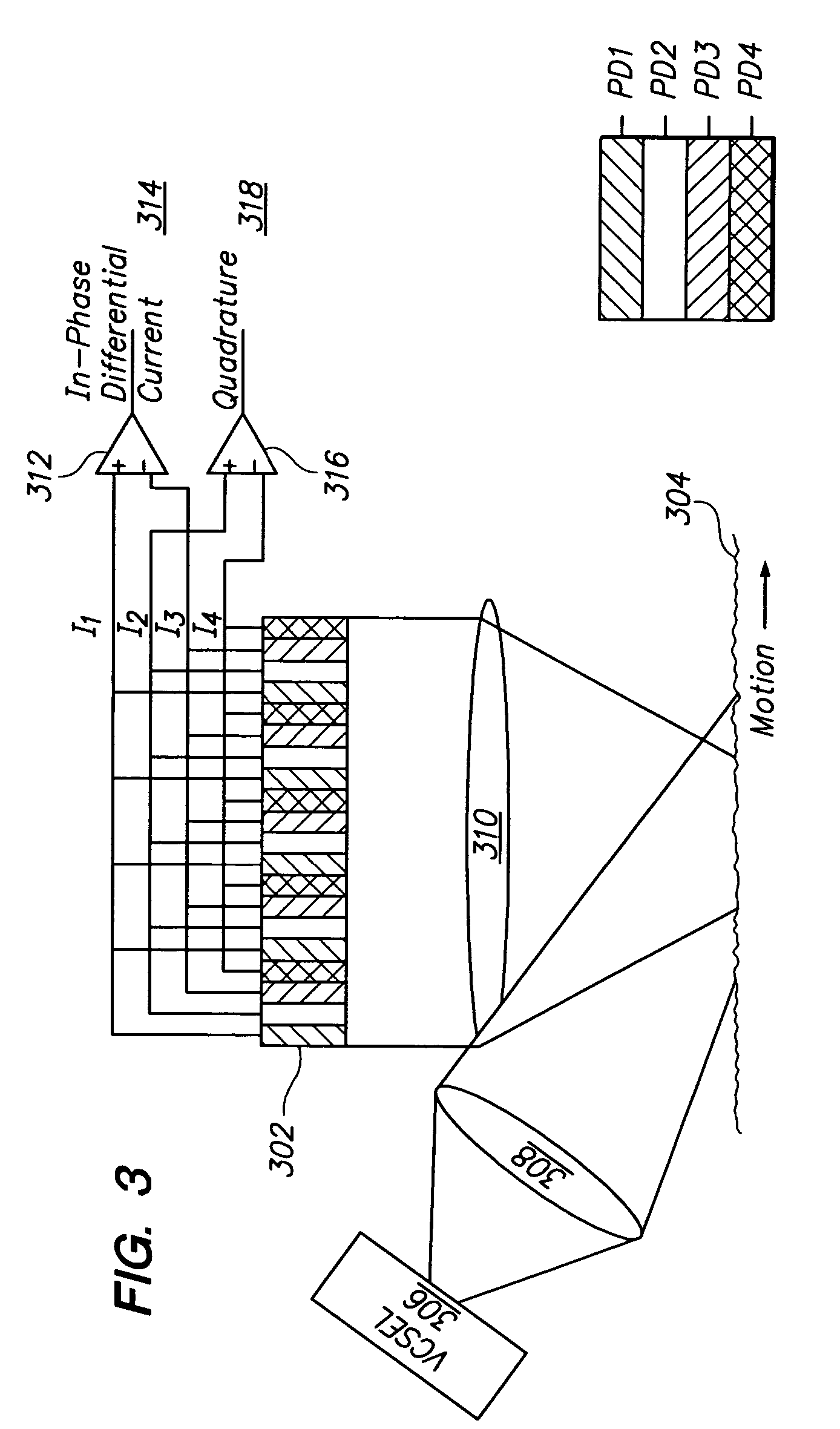Optical position sensing device including interlaced groups of photosensitive elements
a technology of optical positioning and photosensitive elements, which is applied in the direction of static indicating devices, counting objects on conveyors, instruments, etc., can solve the problems of limiting the useful life of the device, prone to inaccuracy and malfunction, and complex design. , to achieve the effect of reducing the cost of image processing, and improving the accuracy of image processing
- Summary
- Abstract
- Description
- Claims
- Application Information
AI Technical Summary
Benefits of technology
Problems solved by technology
Method used
Image
Examples
Embodiment Construction
Problems with Prior Optical Positioning Devices
[0037]One problem with prior speckle-based OPDs stems from the pitch or distance between neighboring photodiodes, which typically ranges from ten (10) micrometers to five hundred (500) micrometers. Speckles in the imaging plane having a size smaller than this pitch are not properly detected, thereby limiting the sensitivity and accuracy of the OPD. Speckles significantly larger than this pitch produce a drastically smaller signal.
[0038]Another problem is the coherent light source must be correctly aligned with the detector in order to produce a speckled surface image. With prior designs, the illuminated portion of an image plane is typically much wider than the field of view of the detector to make sure the photodiode array(s) is (are) fully covered by the reflected illumination. However, having a large illuminated area reduces the power intensity of the reflected illumination that the photodiodes can detect. Thus, attempts to solve or ...
PUM
 Login to View More
Login to View More Abstract
Description
Claims
Application Information
 Login to View More
Login to View More - R&D
- Intellectual Property
- Life Sciences
- Materials
- Tech Scout
- Unparalleled Data Quality
- Higher Quality Content
- 60% Fewer Hallucinations
Browse by: Latest US Patents, China's latest patents, Technical Efficacy Thesaurus, Application Domain, Technology Topic, Popular Technical Reports.
© 2025 PatSnap. All rights reserved.Legal|Privacy policy|Modern Slavery Act Transparency Statement|Sitemap|About US| Contact US: help@patsnap.com



